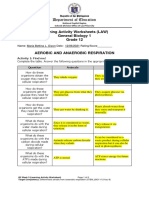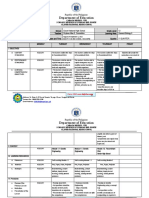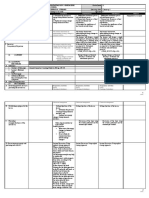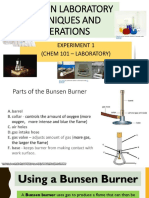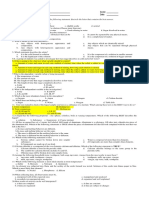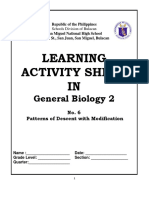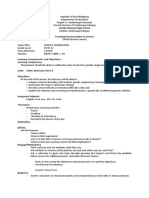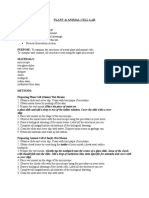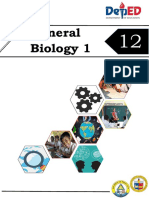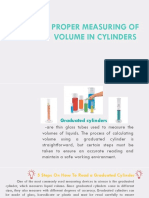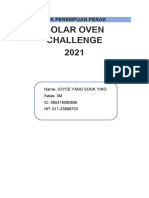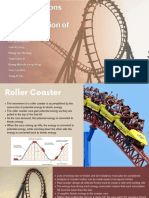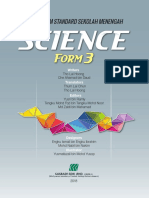0% found this document useful (0 votes)
98 views2 pagesFermentation Lab
The fermentation lab aims to observe the fermentation process using yeast (Saccharomyces) and involves setting up three conical flasks with varying combinations of warm water, sugar, and yeast. Students will monitor the size of balloons placed over the flasks to measure carbon dioxide production and record the results. The experiment concludes with a transfer of balloons to lime water to test for carbon dioxide presence and a cleanup of lab supplies.
Uploaded by
Nurul Shafiah Mustafa KamalCopyright
© © All Rights Reserved
We take content rights seriously. If you suspect this is your content, claim it here.
Available Formats
Download as DOCX, PDF, TXT or read online on Scribd
0% found this document useful (0 votes)
98 views2 pagesFermentation Lab
The fermentation lab aims to observe the fermentation process using yeast (Saccharomyces) and involves setting up three conical flasks with varying combinations of warm water, sugar, and yeast. Students will monitor the size of balloons placed over the flasks to measure carbon dioxide production and record the results. The experiment concludes with a transfer of balloons to lime water to test for carbon dioxide presence and a cleanup of lab supplies.
Uploaded by
Nurul Shafiah Mustafa KamalCopyright
© © All Rights Reserved
We take content rights seriously. If you suspect this is your content, claim it here.
Available Formats
Download as DOCX, PDF, TXT or read online on Scribd
/ 2







